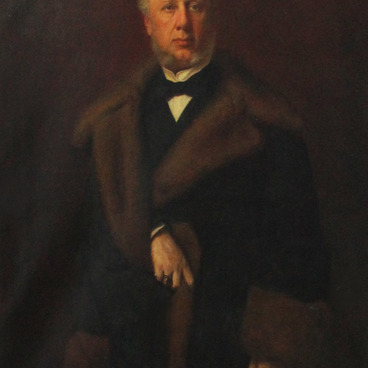Alexander Baryatinsky (1815–1879) was born into the family of a Russian diplomat on the Ivanovo estate in the Kursk Governorate. He was a Russian state official and military leader, prince, field marshal general, member of the State Council, hero of the Caucasian War.
He joined the military in the Chevalier Guard Regiment in 1831. In 1835, he got transferred to the Caucasus: between March and December of that year, he took part in hostilities against the local guerillas, was wounded, and returned to Saint Petersburg. In 1836, he joined the court of the heir to the Russian throne and future Emperor Alexander II.
In 1845, Alexander Baryatinsky once again went to the Caucasus: as part of the Separate Caucasus Corps, he participated in the Caucasus War, commanding first a battalion, then a regiment, a brigade, a division, and eventually the left flank of the Russian expeditionary forces in Chechnya. As head of the main HQ of the Caucasus Corps, he took part in the Crimean war: in 1854, he fought with distinction at the battle of Kuruk-Dara.
In 1856, he became the commander-in-chief of the Caucasus army and the tsar’s representative in the Caucasus. Along with the army HQ Dmitry Milyutin, he developed a new plan for waging war in the Caucasus, which called a consistent advance of the troops from one line to the next while consolidating the newly occupied territories. On August 25 (September 6), 1859, Baryatinsky’s troops broke the resistance of Shamil’s main force and took Shamil prisoner.
Alexander Baryatinsky retired from the army in 1860 and got appointed a member of the State Council. He was awarded the orders of St. Andrew the First-Called, St. Alexander Nevsky, White Eagle, St. Vladimir, 2nd, 3rd, and 4th classes, St. Anne, 1st, 2nd, and 3rd classes, and St. George, 3rd and 4th classes, as well as foreign orders. For his role in the Caucasian War, Alexander Baryatinsky was presented with a golden saber with the inscription “For Bravery.”
On December 6, 1862, Alexander Baryatinsky resigned from all his positions except for his membership on the State Council and honorary membership in the Nikolaevskaya Academy of the General headquarters. He died in Geneva, Switzerland, in the spring of 1879, aged 63. As per his will, his body was taken to Russia and buried at his family estate in the village of Ivanovo, Kursk Governorate.
He joined the military in the Chevalier Guard Regiment in 1831. In 1835, he got transferred to the Caucasus: between March and December of that year, he took part in hostilities against the local guerillas, was wounded, and returned to Saint Petersburg. In 1836, he joined the court of the heir to the Russian throne and future Emperor Alexander II.
In 1845, Alexander Baryatinsky once again went to the Caucasus: as part of the Separate Caucasus Corps, he participated in the Caucasus War, commanding first a battalion, then a regiment, a brigade, a division, and eventually the left flank of the Russian expeditionary forces in Chechnya. As head of the main HQ of the Caucasus Corps, he took part in the Crimean war: in 1854, he fought with distinction at the battle of Kuruk-Dara.
In 1856, he became the commander-in-chief of the Caucasus army and the tsar’s representative in the Caucasus. Along with the army HQ Dmitry Milyutin, he developed a new plan for waging war in the Caucasus, which called a consistent advance of the troops from one line to the next while consolidating the newly occupied territories. On August 25 (September 6), 1859, Baryatinsky’s troops broke the resistance of Shamil’s main force and took Shamil prisoner.
Alexander Baryatinsky retired from the army in 1860 and got appointed a member of the State Council. He was awarded the orders of St. Andrew the First-Called, St. Alexander Nevsky, White Eagle, St. Vladimir, 2nd, 3rd, and 4th classes, St. Anne, 1st, 2nd, and 3rd classes, and St. George, 3rd and 4th classes, as well as foreign orders. For his role in the Caucasian War, Alexander Baryatinsky was presented with a golden saber with the inscription “For Bravery.”
On December 6, 1862, Alexander Baryatinsky resigned from all his positions except for his membership on the State Council and honorary membership in the Nikolaevskaya Academy of the General headquarters. He died in Geneva, Switzerland, in the spring of 1879, aged 63. As per his will, his body was taken to Russia and buried at his family estate in the village of Ivanovo, Kursk Governorate.
